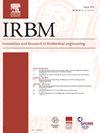3D技术辅助脑干出血微创手术的疗效分析
IF 5.6
4区 医学
Q1 ENGINEERING, BIOMEDICAL
引用次数: 0
摘要
目的本研究是一项单中心前瞻性队列研究,比较3d打印导板辅助微创穿刺引流(MIPD)与保守治疗原发性脑干出血(PBH)的疗效。方法2018年5月至2024年1月,在我院接受3d打印导板辅助MIPD治疗的PBH患者70例作为治疗队列。70名倾向评分匹配的PBH患者在同一时期接受保守治疗作为对照。主要结局是在90天的随访中达到改良Rankin量表(mRS) 1到3分的患者比例。次要结局包括血肿量、入院和治疗后评估的美国国立卫生研究院卒中量表(NIHSS)评分、并发症发生率(包括医院获得性肺炎[HAP]、颅内感染、再出血、脑积水和癫痫发作)。结果在90天内,治疗队列中获得良好结果的患者明显增多(mRS 1-3: 41.4% vs 22.9%, P=0.03)。与对照组相比,治疗组术后血肿体积和NIHSS评分显著降低(p < 0.05)。治疗组HAP发生率(11.4% vs 28.6%, P=0.02)和颅内感染发生率(1.4% vs 11.4%, P=0.039)显著降低。在再出血、脑积水或癫痫发作率方面,两组间无显著差异(p < 0.05)。结论3d打印导板辅助MIPD治疗PBH的疗效优于保守治疗。该方法提供快速血肿清除,减轻神经功能缺损,降低HAP和颅内感染风险,转化为更低的死亡率和致残率,支持更广泛的临床应用,有待多中心验证。本文章由计算机程序翻译,如有差异,请以英文原文为准。

Effectiveness of 3D Technology-Assisted Minimally Invasive Surgery for Brainstem Hemorrhage
Objective
This single-center prospective cohort study compared the efficacy of 3D-printed guide plate-assisted minimally invasive puncture and drainage (MIPD) with conservative treatment in managing primary brainstem hemorrhage (PBH).
Methods
Between May 2018 to January 2024, 70 PBH patients undergoing 3D-printed guide plate-assisted MIPD at our institution were enrolled as the treatment cohort. Seventy propensity score-matched PBH patients receiving conservative treatment during the same period served as controls. The primary outcome was the proportion of patients achieving a modified Rankin Scale (mRS) score of 1 to 3 at the 90-day follow-up. Secondary outcomes comprised hematoma volume, National Institutes of Health Stroke Scale (NIHSS) scores assessed at admission and post-treatment, and incidence rates of complications (including hospital-acquired pneumonia [HAP], intracranial infection, rebleeding, hydrocephalus, and seizures).
Results
At 90 days, significantly more patients in the treatment cohort achieved favorable outcomes (mRS 1-3: 41.4% vs 22.9%, ). Postoperative hematoma volumes and NIHSS scores were significantly reduced in the treatment cohort compared to the control cohort (both ). The treatment cohort had significantly lower incidence of HAP (11.4% vs 28.6%, ) and intracranial infection (1.4% vs 11.4%, ). No significant between-group differences were found in rebleeding, hydrocephalus, or seizure rates (all ).
Conclusion
3D-printed guide plate-assisted MIPD demonstrates superior efficacy over conservative treatment for PBH. This approach provides rapid hematoma clearance, mitigates neurological deficits, and reduces HAP and intracranial infection risks, translating to lower mortality and disability, supporting broader clinical implementation pending multicenter validation.
求助全文
通过发布文献求助,成功后即可免费获取论文全文。
去求助
来源期刊

Irbm
ENGINEERING, BIOMEDICAL-
CiteScore
10.30
自引率
4.20%
发文量
81
审稿时长
57 days
期刊介绍:
IRBM is the journal of the AGBM (Alliance for engineering in Biology an Medicine / Alliance pour le génie biologique et médical) and the SFGBM (BioMedical Engineering French Society / Société française de génie biologique médical) and the AFIB (French Association of Biomedical Engineers / Association française des ingénieurs biomédicaux).
As a vehicle of information and knowledge in the field of biomedical technologies, IRBM is devoted to fundamental as well as clinical research. Biomedical engineering and use of new technologies are the cornerstones of IRBM, providing authors and users with the latest information. Its six issues per year propose reviews (state-of-the-art and current knowledge), original articles directed at fundamental research and articles focusing on biomedical engineering. All articles are submitted to peer reviewers acting as guarantors for IRBM''s scientific and medical content. The field covered by IRBM includes all the discipline of Biomedical engineering. Thereby, the type of papers published include those that cover the technological and methodological development in:
-Physiological and Biological Signal processing (EEG, MEG, ECG…)-
Medical Image processing-
Biomechanics-
Biomaterials-
Medical Physics-
Biophysics-
Physiological and Biological Sensors-
Information technologies in healthcare-
Disability research-
Computational physiology-
…
 求助内容:
求助内容: 应助结果提醒方式:
应助结果提醒方式:


